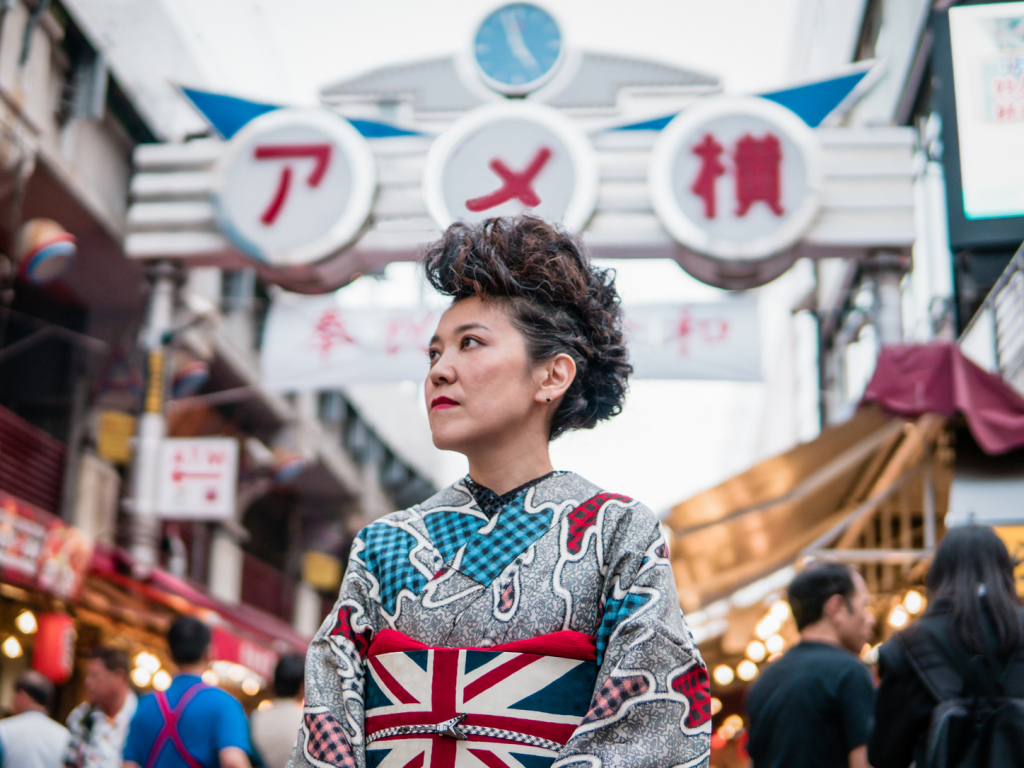Elegant. Alluring. Timeless. Kimono have origins that can be traced back over a millennium, and until the last century they were the everyday wear for the majority of Japanese. Now, kimono are more commonly associated with major life events and certain classical arts such as the tea ceremony.
However, this ancient garment is experiencing a rebirth in the hands of kimono aficionados around the world (not including Kim Kardashian). We break down a 10-step guide to its history, design and evolving future.
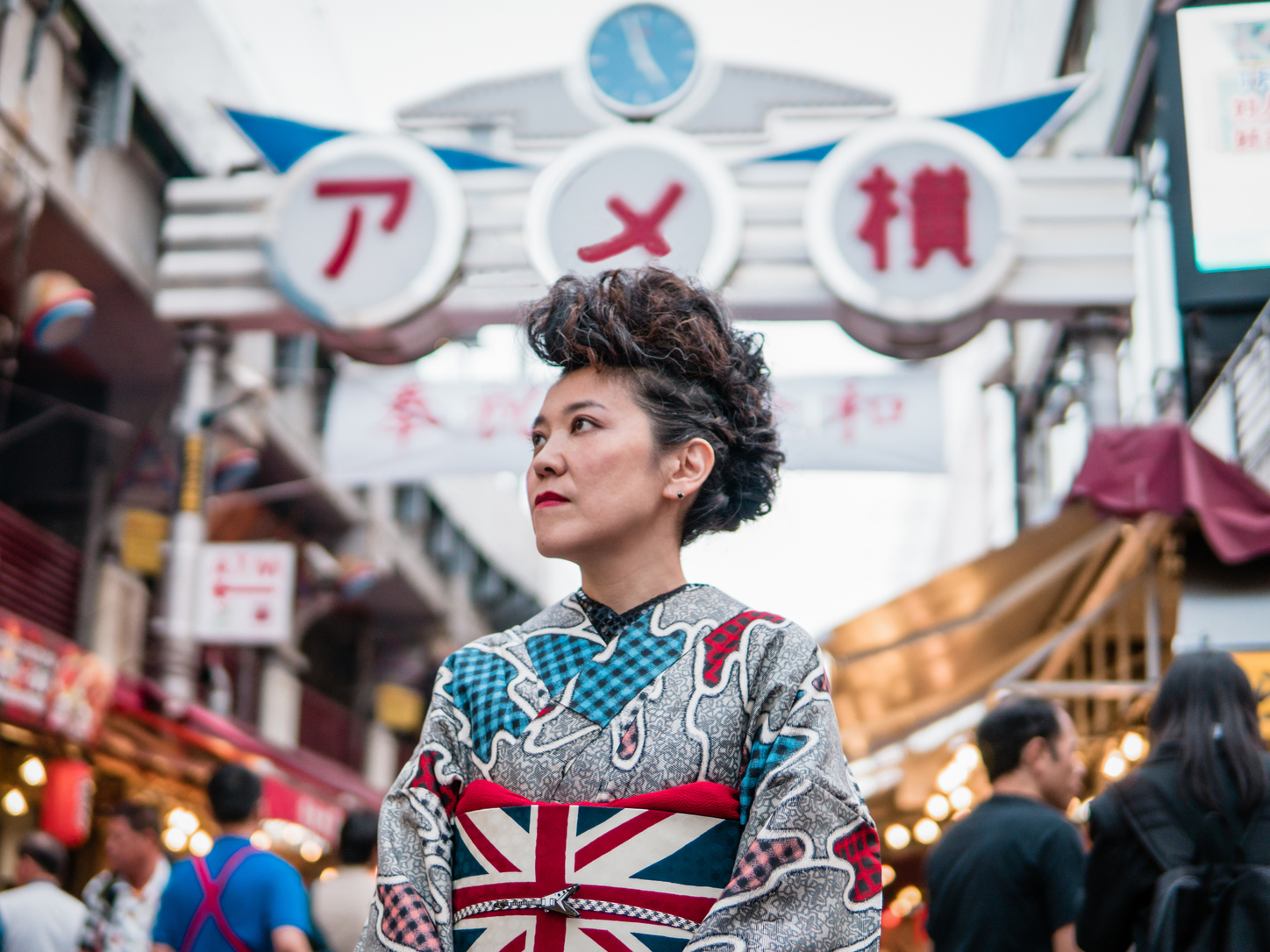
Model: Hitomi Tanaka, Styling and Photo: SALZ Tokyo
1. Early kimono were strongly influenced by Chinese gowns
First introduced during the Nara period (710-794), by the Heian period (794-1185) they were heavily layered (the junihitoe could have up to 15 to 20 layers and weigh up to 20kg) and worn with hakama and a trailing apron called mo. Later, in the Kamakura period (1185-1333), the kimono had become everyday wear.
2. A single kimono can take months to complete due to the labor-intensive dyeing process
Advanced dyeing and weaving techniques developed during the Edo period (1603-1868). Noted for its use of vibrant colors, gold embroidery and decoration, Kyoto’s Kyo-yuzen dyeing is most commonly seen on furisode and wedding kimono, while Kanazawa’s Kaga-yuzen dyeing is prized for its realistic shading using only five colors (kaga-gosai).
3. The basic design of kimono has remained unchanged for hundreds of years
Cut into eight pieces from a single length of cloth called a tanmono, which measures roughly 0.38 to 0.42 meters wide by 12.5 meters long, the pieces are then folded and sewn together to form the kimono. Kimono can be lined or unlined and the fabric can be silk, wool, hemp, cotton or polyester (also marketed as “washable”). They are worn with an obi, a decorative woven sash that comes in several styles.
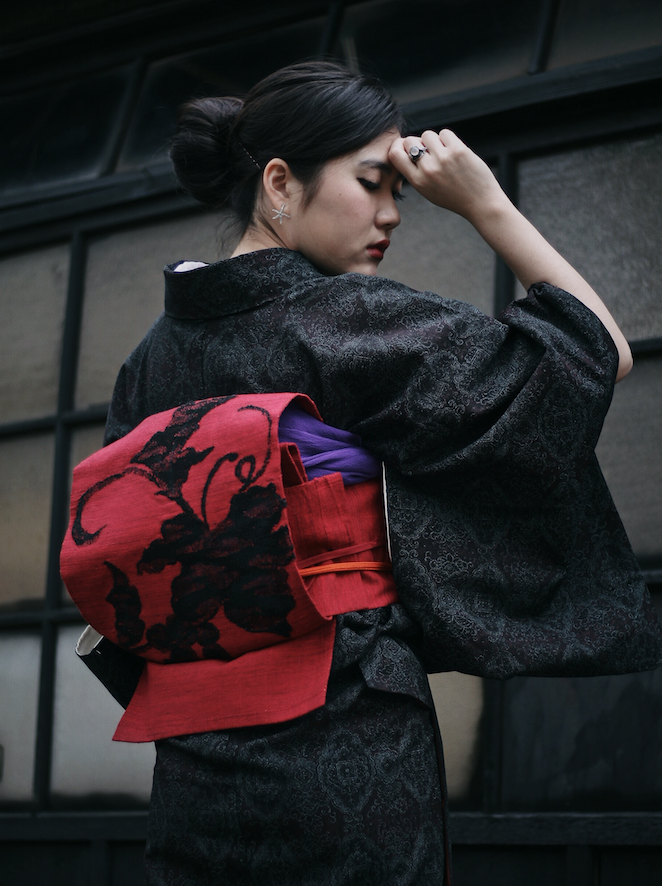
Model: Ayu Watanabe @yakuzayu, Photography: Stasia Matsumoto
4. Kyoto’s Nishijin district is the major producer of Nishijin-ori, the most
expensive and ornate woven fabrics
By the late 1800s, Nishijin textile workshops had introduced European jacquard loom technology. One notable workshop is that of the Kawase family (kawaseman.co.jp), registered traditional kimono designers who have created beautiful kimono and coordinates for almost 200 years. In addition to classical Japanese motifs, the Kawases designed an award-winning kimono collection featuring artwork by art nouveau pioneer Alphonse Mucha.
5. There are different styles of women’s kimono depending on age and marital status
Like Western fashion, there are numerous criteria for what type of kimono and accessories to wear for a given occasion, known as “TPO for Wafuku” (TPO stands for Time, Place, Occasion). Though they appear simple, wearing a kimono properly requires practice and training, so some women choose to enroll in kimono dressing classes. Furisode are long-sleeved kimono worn by unmarried women, most frequently seen at Coming of Age Day ceremonies in January. During the Meiji era, female university professors and students began to wear hakama, and it is still traditional graduation attire for young women today. The komon (small pattern) was the common everyday kimono worn until the last century. Houmoungi are semi-formal kimono appropriate for dinners, concerts and similar events, while versatile solid-colored iromuji are often worn for the tea ceremony (they can be made more formal by including the family crest). Tomesode is the most formal women’s kimono; black tomesode are worn at weddings by the mother and married female relatives of the bride and groom. Bridal kimono coats (uchikake) can be either solid white or brightly colored, are heavily brocaded, feature a trailing padded hem, and are worn as an outer garment.
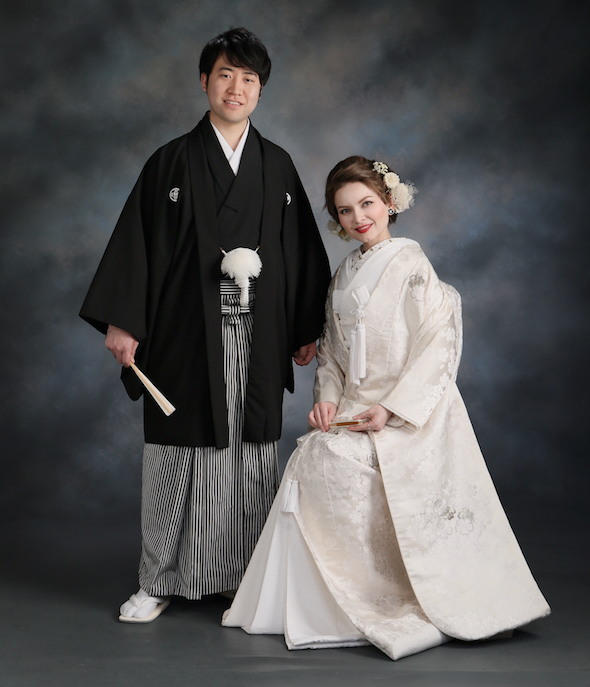
Wedding kimono, photograph courtesy of Stasia Matsumoto, Photography: Studio Laquan
6. Much simpler in style and accessories, men’s kimono have muted solid colors and a narrow obi, and are frequently worn with a haori jacket
Unlike women’s kimono, men’s kimono are not adjustable for height. The most formal men’s kimono is the itsutsu montsuki haori hakama, which is worn at Shinto weddings, by performers and artists, and less frequently at Coming of Age Day and graduation ceremonies. The black silk haori features five family crests (mon). While men’s kimono and haori may appear plain, many have elaborately decorated linings. During the Edo period, when men removed their haori or kimono (at public baths, for example) they were able to display their wealth based on how intricate the inner lining was. Modern designers have created men’s kimono and coordinates that are stylish, evolving and innovative, thus updating this ancient attire for the modern era. A good example of this new trend is Fujikiya in Tokyo (www.fujikiya-kimono.com).
7. Recently, several companies in Japan have addressed the needs of wheelchair users by offering kimono, yukata and hakama modified for easy wear and comfort
The styles include elasticized zori sandals, two-piece kimono and hakama with Velcro closures, and obi sashes that do not require standing to tie, making kimono accessible for everyone. Two examples of shops offering these are Hanayome Kobo (hagoromostyle.net) and Esprit Robe (espritrobe.com).
8. Kimono are being embraced, embellished and enhanced by kimono aficionados around the world
The international organization Kimono de Jack (www.kimonojack.com) unites kimono enthusiasts at various meetups and events (local branches can be found online), while Polish designer and illustrator Katarzyna Suchowiak’s ThreeMagpies Studio (www.3magpiesstudio.com) creates stunning original obi and kimono accessories drawn from Japanese lore and nature (she also accepts custom commissions).
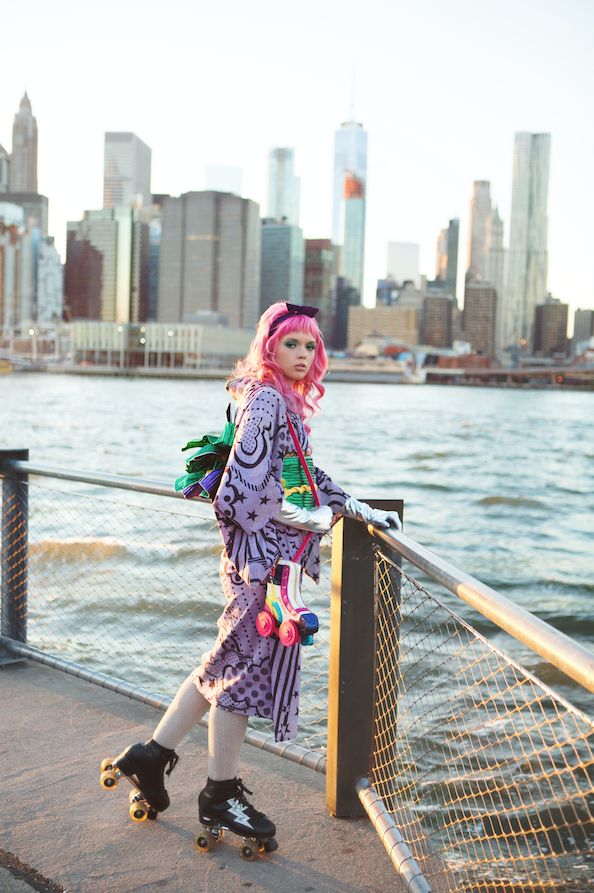
Kimono and Obi by Rumi Rock, Model: Liz Harlan, Photography: Angelita Gonzalez, Hair and Makeup: Perryn Morris, Styling and Direction: SALZ Tokyo
9. In 2018, Globus Washitsu showcased “Modern Samurai,” an exhibition of modern men’s kimono designers, in New York City
Curated by international kimono expert Spree Kingyo, it was the first show of its kind outside of Japan. The Globus Family also supports the Kimono Visionaries Project (nycwashitsu.com/kimono.html) and regularly sponsors notable Japanese performers and artists in the United States.
10. To get started on your own kimono journey, inexpensive garments and accessories can be sourced from shrine flea markets and secondhand shops in Tokyo
There are numerous online resources and videos to learn how to wear and accessorize kimono; try mixing colors, patterns, retro and modern, Western and Japanese elements, and even men’s and women’s coordinates to create a unique kimono style all your own.
Want to learn more about kimono? Read our interview with Dr. Sheila Cliffe, author of The Social Life of Kimono:
Sheila Kimono Style: “It Helps Young Japanese Women Feel That They Can Break the Rules”

